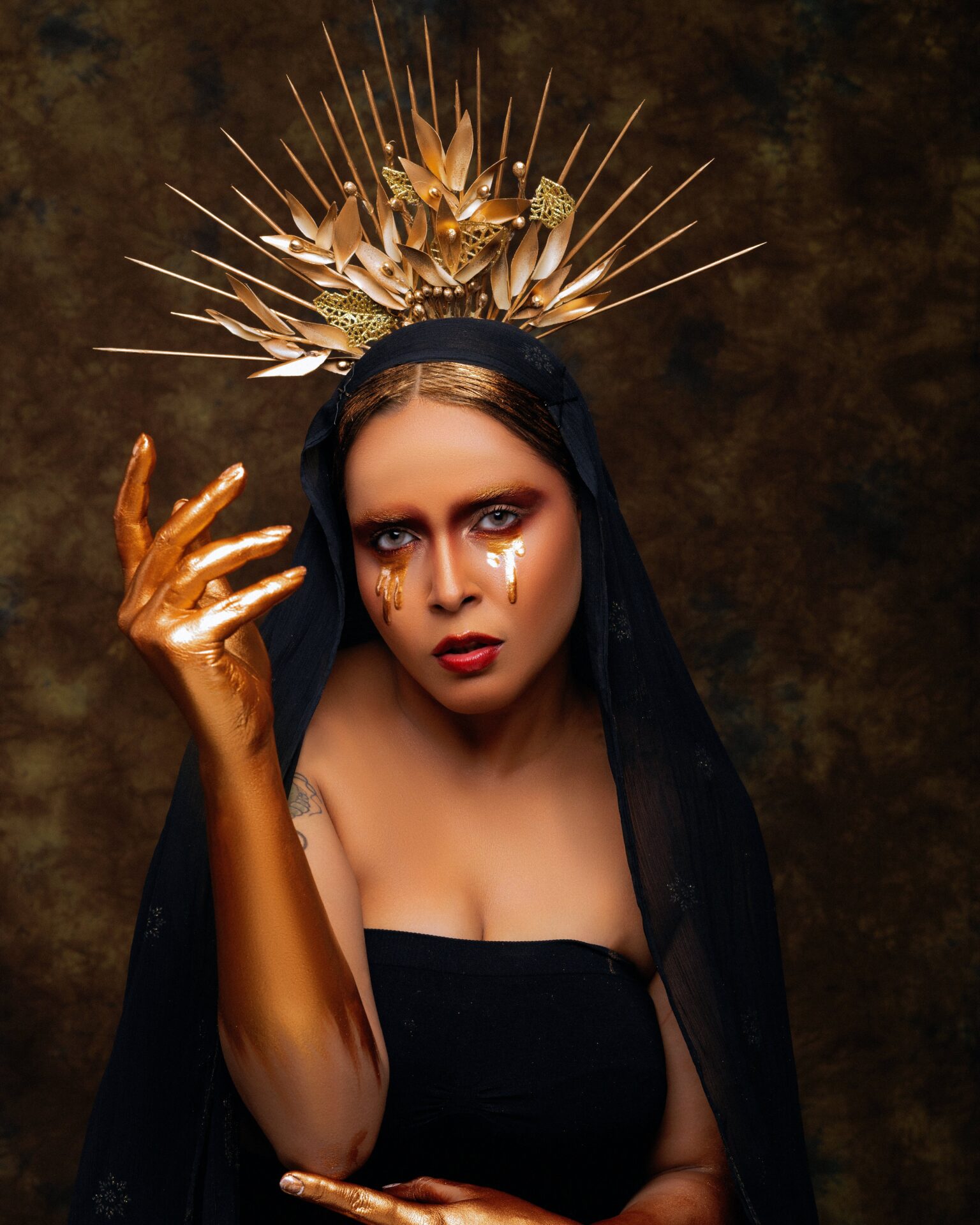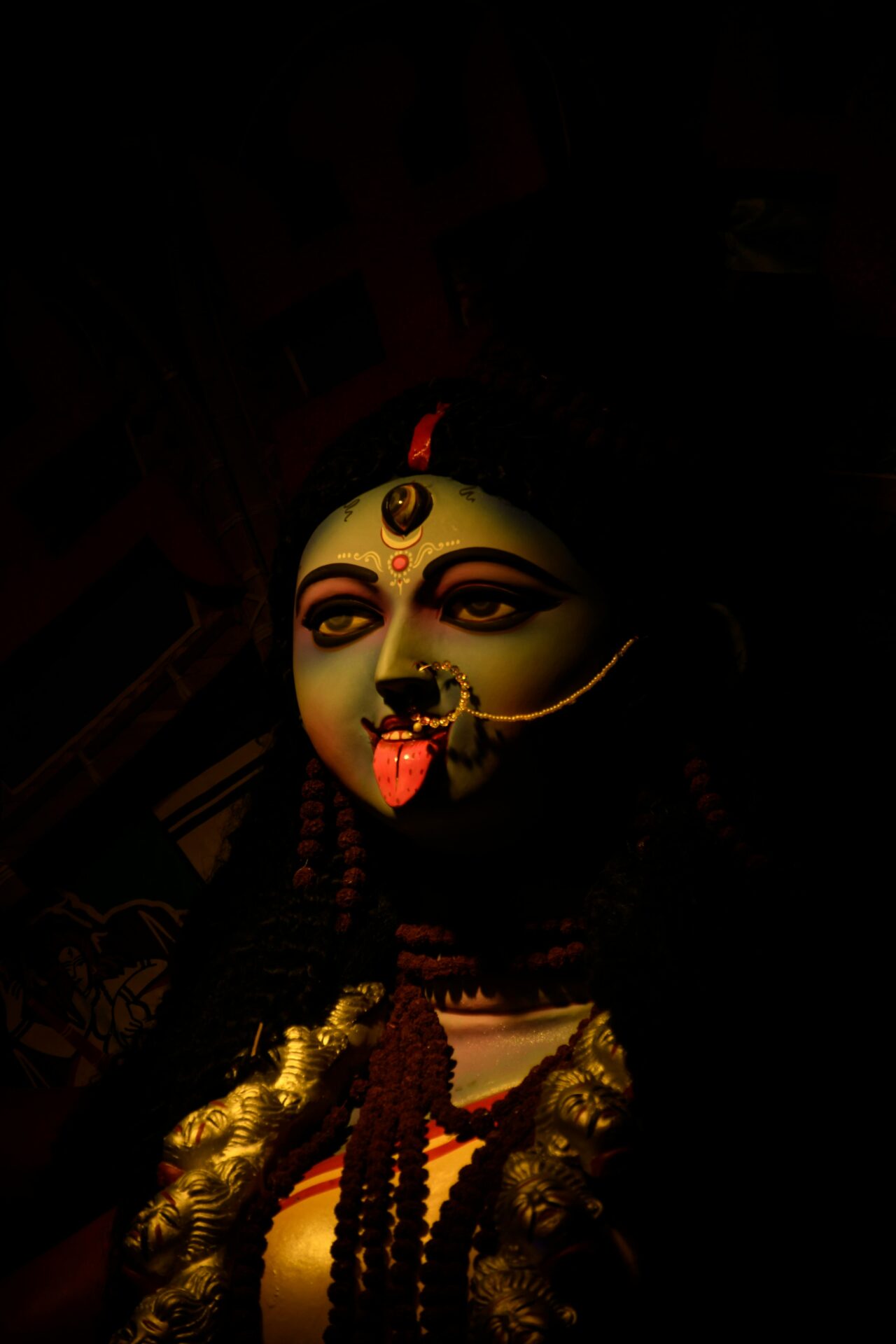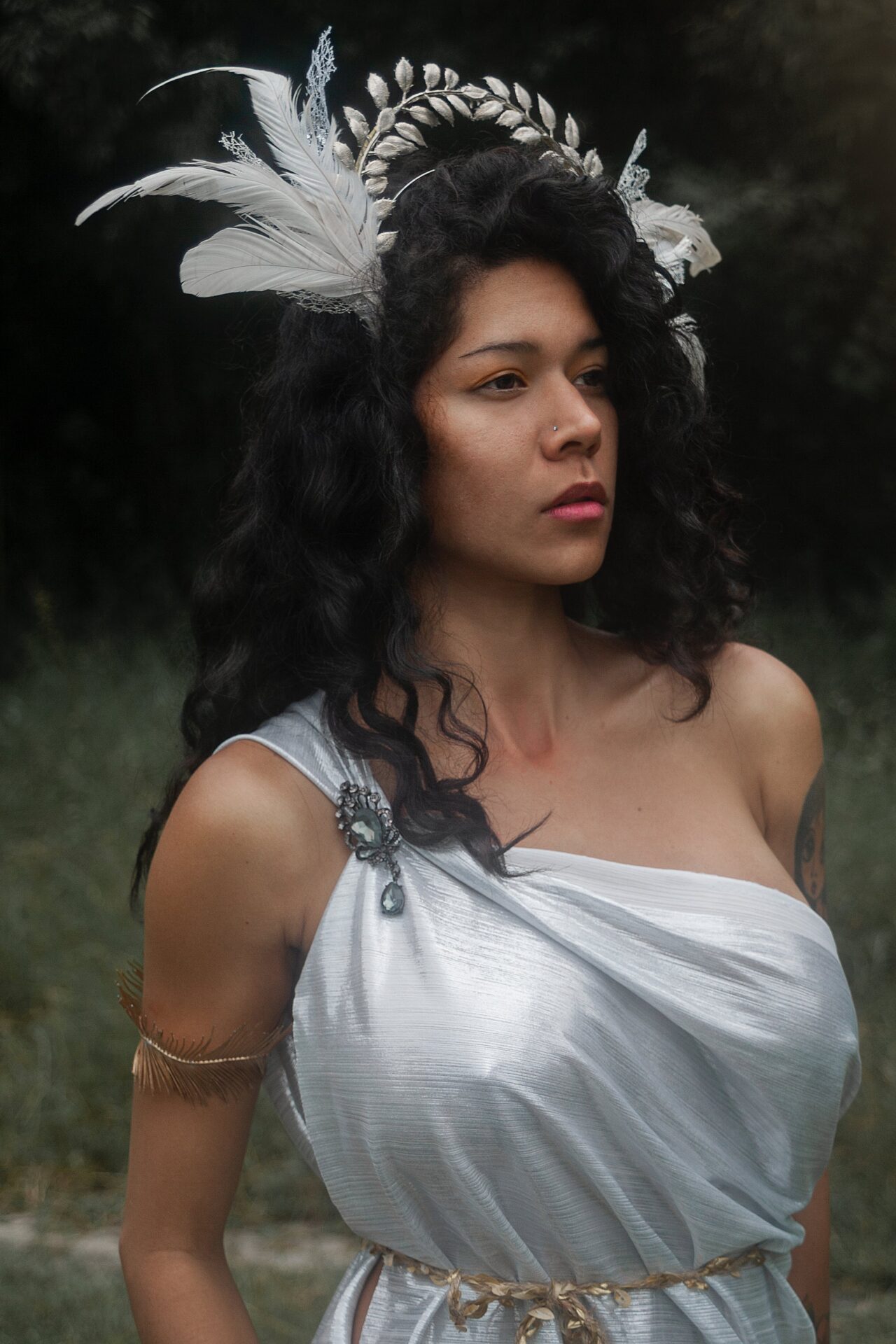Embark on a journey through the vivid imagery and profound symbolism that envelops Goddess Kali, one of Hinduism’s most fascinating deities. Your understanding of her powerful presence will deepen as you explore the myriad ways in which Kali is depicted, from her fierce form to the various emblems that hold a universe of meaning within their simple representations. As you learn about her striking appearance and the sacred symbols she bears, a richer picture of this divine figure will emerge, beckoning you to unlock the mysteries of her eternal significance.
Table of Contents
Understanding Goddess Kali
Origins in Hindu Mythology
You may already know that Kali is a powerful and complex deity from Hindu mythology, but you might be curious about her origins. She is often considered an incarnation of the Mother Goddess and is associated with Shakti, the feminine energy. Kali first appears in the historical record around 6th century BCE, in texts such as the Devi Mahatmya. She emerged from the goddess Durga during a battle with demonic forces, symbolizing the ultimate power of good over evil.
Kali’s Personification of Time and Change
Your fascination with Kali might be rooted in her representation of the cycle of time and change. Her name, Kali, comes from the Sanskrit word “Kala”, which means time. Kali embodies the transformative power of time, which can be both constructive and destructive. She reminds you that change is inevitable and should be embraced as an essential aspect of existence.
Associations with Empowerment and Liberation
You may find that Kali’s most compelling attribute is her role in empowerment and liberation. She is often invoked by those looking to break free from personal struggles or societal constraints. Kali’s fierce and unapologetic nature encourages you to face your challenges head-on and strive for freedom from the cycle of karma and rebirth.
Iconography of Kali
Common Portrayals in Art and Sculpture
Have you ever noticed how Kali is typically depicted with a ferocious expression, sticking out her tongue? In art and sculpture, she’s shown with dark, often blue-black skin, symbolizing the boundless night sky and the infinite possibilities of creation and destruction. Kali is often displayed standing or dancing on her consort, Shiva, which signifies the dynamic balance between life and death.
Symbolic Representation in Hindu Temples
Walking into a Hindu temple dedicated to Kali, you may feel the strong presence of her symbolism. From the depiction of her under the soles of her feet to her standing over her consort, Shiva, the symbols within these sacred spaces reflect her attributes of liberation and the cyclical nature of time and change.
Kali in Modern Media and Interpretations
The depiction of Kali has transcended traditional media as you see her reimagined in contemporary art, literature, and films. Kali’s image is often adapted to highlight issues of feminism, empowerment, and social justice, demonstrating her enduring relevance and adaptability across cultures and eras.

Physical Depiction of Kali
Dark or Blue-Black Skin Tone
Your recognition of Kali can often be attributed to her distinctive dark or blue-black skin. This characteristic is more than just a physical trait; it symbolizes the void of the universe from which all creation springs and into which all creation eventually dissolves.
Facial Expressions and Eyes
Kali’s face is visually arresting, often described with a feral and unrestrained expression. Her eyes are wide and intense, capturing your attention—sometimes in fear, sometimes in awe. This fierce gaze pierces through illusions to reveal the truths of existence.
Number of Arms and Attributes
Typically, Kali is depicted with four arms, which you may come to understand as a representation of the completeness of her power. Each hand holds a symbolic object or makes a significant gesture known as a mudra, that conveys her various attributes and missions in the cosmic order.
Kali’s Attire and Ornaments
The Garland of Severed Heads
As unusual as it may appear, the garland of severed heads around Kali’s neck is deeply symbolic. These heads are said to represent the letters of the Sanskrit alphabet and signify her mastery over knowledge and wisdom. The garland also symbolizes the ego which must be severed to attain enlightenment.
The Skirt of Arms
Just as fascinating is her skirt of arms, which serves to remind you of the consequences of karma and the impermanence of all things material. With this attire, Kali conveys the message that she is the ultimate destroyer of evil and the protector of the righteous.
The Unclad Truth of Kali’s Form
Despite her adornments, Kali is often shown partially or completely unclad. This aspect of your perception of her unclothed form emphasizes the theme that she is beyond all human conventions and represents the ultimate truth, which is raw and unadorned by material reality.

Symbols of Power and Destruction
The Sword or Scimitar
In one of her four hands, Kali typically holds a sword or scimitar, a tool that slices through ignorance and ego, just as it would through flesh and bone. This symbolizes your understanding of the need to cut ties from the limiting beliefs that prevent personal growth.
The Trishul (Trident)
The trishul, or trident, that Kali is sometimes shown holding is another powerful symbol. In your interpretation, it can represent various trinities—creation, preservation, and destruction or past, present, and future; binding together the many aspects of time and existence that Kali encompasses.
The Demon Raktabija and The Bloodshed
The myth of Kali killing the demon Raktabija can be a compelling image of her power. Each drop of Raktabija’s blood that fell to the ground spawned new demons, and Kali thwarted this by consuming the drops before they could take form. The bloodshed signifies the end of the cycle of regeneration of negativity and evil.
Representations of Time and Death
Kali and the Cremation Ground Symbolism
The cremation ground is a recurrent symbol in the depictions of Kali. It is where she often dances in the cycle of creation and destruction. The cremation ground represents the place where the five elements (earth, water, fire, air, and ether) that constitute the body are dissolved, reminding you of the impermanence of life.
The Embrace of Shiva and Cosmic Order
Kali is not just a lone figure of strength; she is often shown in association with Shiva, who lies calmly beneath her. This represents a deep cosmic balance—Shiva’s consciousness and passivity complemented by Kali’s active power. Together, they maintain the order of the universe.
The Noose: Capturing Time
Yet another powerful symbol associated with Kali is the noose she sometimes holds, representing the concept of time that binds all life. Through this symbol, you are reminded that life is transient, and the only eternal truth is the soul, which Kali helps liberate through her guidance.

Kali’s Consort: Lord Shiva
The Dance of Destruction with Shiva
Kali’s dance is not one of mere destruction but transformation, and her consort, Shiva, is an integral part of this. In their cosmic dance, they are involved in the continuous cycle of destruction to make way for new creation, guiding your understanding of the importance of this balance for the world to function.
Shiva Beneath Kali’s Feet: A Symbol of Balance
The image of Shiva lying passive beneath the feet of a rampaging Kali captures a poignant symbolism. You grasp that it is not a sign of domination but rather one of reverence, where Shiva embodies stillness and Kali, dynamic movement. This illustrates the interdependency of the passive and active forces of existence.
Interpretations of the Divine Couple
The divine couple, Kali and Shiva, are open to various interpretations, each offering insights into the complex nature of the gods and the cosmos. They can symbolize the feminine and masculine energies, the physical and the spiritual realms, or the temporal world and the eternal reality, enhancing your appreciation of their profound symbology.
Expressions of Divine Fury
The Protruding Tongue
Kali’s protruding tongue is a distinctive feature that can send shivers down your spine. It symbolizes the goddess’s consumption of all sins, her victory over negative forces, and sometimes, her embarrassment at the sight of Shiva beneath her, indicating her human-like qualities amidst her divine wrath.
The Roar of Kali
Imagine the powerful roar of Kali echoing through the battlegrounds, paralyzing foes with terror. The roar is emblematic of the divine fury and unleashed power that Kali brings to the battle against injustice and evil, empowering you to vehemently oppose the wrongdoings in the world.
Manifestations of Fierce Warfare
Kali’s fierce demeanor is not merely for show. It represents her role as a divine warrior, engaging with and triumphing over forces of darkness. Her aggressive manifestations serve as a reminder that sometimes, fierce battle is necessary to uphold dharma or cosmic order.
The Gentle Aspect of Kali
Kali as the Benevolent Mother
While Kali’s ferocious aspects are well known, you might also find comfort in her gentle nature. Kali is often referred to as a mother figure, showing immense love and care for her children. She can be seen as the ultimate benevolent mother, nurturing and protecting those who turn to her with devotion.
Kali’s Nurturing Aspect in Rituals
During rituals and worship, Kali’s nurturing aspect is often invoked. You can witness the gentleness in these practices, where offerings are made and hymns are sung to please the Mother Goddess. These rituals reinforce her role as a protector and the provider of boons.
The Dichotomy of Fear and Love in Devotion
Kali’s dual nature of inducing fear and providing love is fascinating to you. In your devotion, you learn to see beyond her fierce exterior to the compassionate deity within. This dichotomy is what makes Kali so special and widely revered—her power to both destroy and create inspires a unique blend of reverence, fear, and love in your heart.
Worship and Festivals Dedicated to Kali
Kali Puja and Its Significance
Kali Puja is a significant festival where you celebrate the might and benevolence of the goddess. It’s a night of deep spirituality and festivity, usually coinciding with the new moon day of the Hindu month Ashwin. You join in this communal worship, offering prayers, conducting elaborate rituals, and seeking Kali’s blessings for protection and strength.
Regional Celebrations Across South Asia
As with many deities, the worship of Kali differs across regions. Your exploration of South Asia may lead you to discover unique local festivals and traditions dedicated to Kali, each imbued with regional flavors and practices that reflect the diverse ways in which the goddess is revered.
The Integration of Kali Worship in Daily Practice
Devotion to Kali is not limited to festivals. In your daily life, chanting her mantras, meditating on her form, and offering her simple prayers integrate her presence and blessings into your routine. This continuous worship serves to deepen your connection with Kali, providing you with strength and enlightenment every day.